Dandelions For Health
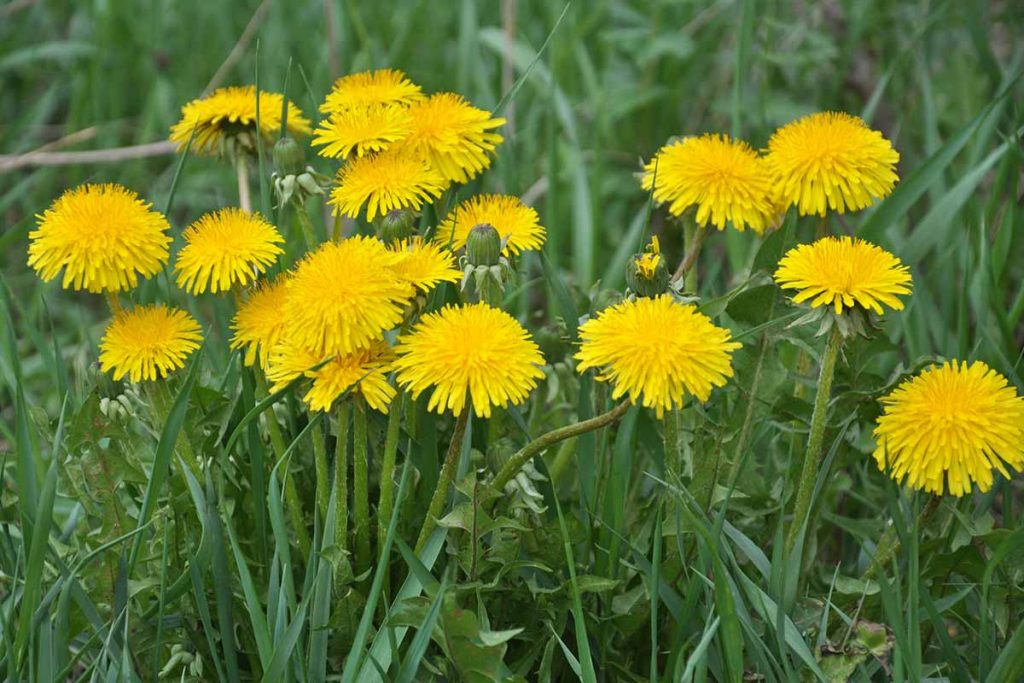
Dandelion is a perennial herb found throughout the temperate regions of North America, Europe, and Asia. The dandelion grows to be several inches in height, with a bright yellow flower, thin stem, and jagged leaves. The root, leaves, and stem all contain a milky fluid.
More than one theory exists on the origins of the dandelion’s name. The most generally accepted theory is that the shape of the leaves inspired the French phrase dent de lion, meaning lion’s tooth. This phrase eventually evolved into the word dandelion.
However, some argue that the phrase dent de lion was meant to describe the way the leaves resembled the angular jaw of a lion fully supplied with teeth. Others claim the yellow flowers can be compared to the golden teeth of the heraldic lion. And yet another claim is that the whiteness of the root is the feature which provides the resemblance.
In the 1879 book Pharmacographia, Fluckiger and Hanbury claim that the name dandelion was given to the plant by Wilhelm, a surgeon who was so impressed by the virtues of the plant that he compared it to Dens leonis (Latin for lion’s tooth).
Regardless of the name’s origin, most people consider the dandelion to be an annoying weed. Yet this “weed” is actually quite a nutritious herb. The dandelion is rich in nutrients that include vitamins A, B-complex, C, and D; iron; magnesium; potassium, manganese; zinc; copper; choline; and calcium.
The first known mention of the dandelion’s medicinal use is in the works of the Arabian physicians of the tenth and eleventh centuries, where it is mentioned under its Latin name Taraxacon as a type of wild Endive. In the thirteenth century, Welsh medicine alluded to the dandelion’s medicinal properties.
The root and leaves of the dandelion appear to have separate beneficial effects. The root has been used in traditional medicine worldwide as a treatment for a variety of liver and gallbladder ailments. The detoxifying effect of the dandelion root aids in the removal of waste from the body. Common uses of the root include treating illnesses believed to be caused by a sluggish or congestive liver, including constipation, headaches, fatigue, and various skin problems.
Due to the dandelion root’s effect on bile secretion, the German Commission E recommends that those with obstruction of the bile ducts or any serious disease of the gallbladder only use it with the guidance of a healthcare practitioner.
Dandelion leaves are best known for their diuretic effect. Their potassium content makes dandelion leaves a safe alternative to the prescription diuretics that normally deplete the body’s store of potassium.
Of all the greens available, dandelion leaves contain the highest content of vitamin A. Dandelion leaves may be eaten raw, used in a stir fry, or boiled.
Dandelion has no known drug interactions. However, caution should be used if combining dandelion with prescription diuretics
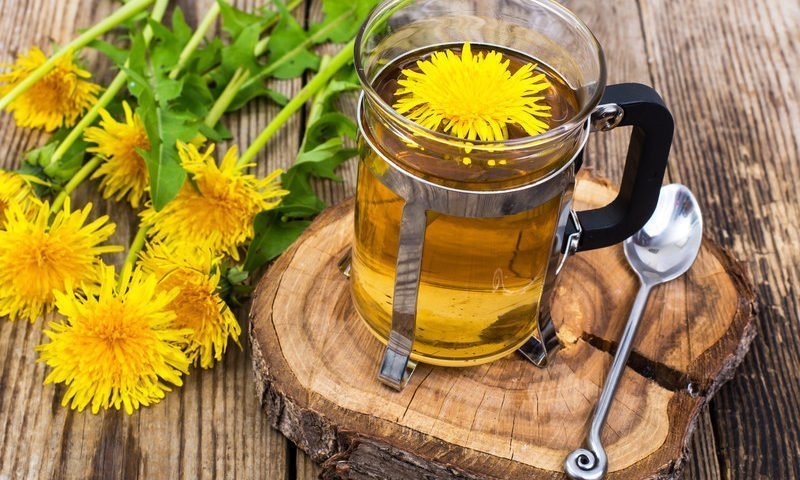
Here are 8 benefits of including dandelion in your diet.
1- High amounts of minerals such as calcium, potassium, phosphorus, zinc and iron
2- Vitamins A, B, C, and D
3- Purifies the Blood
4- Helps with constipation
5- Aids in healthy urinary function
6- Promotes a healthy digestive system
7- Boosts the Immune System
8- Helps normalize Blood Sugar
Dandelion works best when taken with Milk-Thistle. And as with all herbs, always consult your doctor before taking Dandelion. Especially if you’re pregnant, nursing, or on other prescription drugs. Typically taking dandelion is perfectly safe, but if you still have questions, it never hurts to ask and make sure it’s right for you.
The best way to receive the awesome benefits of Dandelion, is by doing a high quality Colon Liver Cleanse. This ensures your liver will love you, and receive a fresh start! A healthy liver is essential to good health
In detail
Dandelion Health Benefits and side effects
Diverse biological activities of dandelion Abstract Dandelion (Taraxacum officinale Weber) is a member of the Asteraceae (Compositae) family, native to Europe but widely distributed in the warmer temperate zones of the Northern Hemisphere. Dandelion and its parts are habitually consumed as plant foods in several areas of the world, where they are also employed in phytotherapy. Indeed, dandelion contains a wide array of phytochemicals whose biological activities are actively being explored in various areas of human health. In particular, emerging evidence suggests that dandelion and its constituents have antioxidant and anti-inflammatory activities that result in diverse biological effects. The present review provides a comprehensive analysis of the constituents of dandelion, an assessment of the pharmacological properties of dandelion, and a description of relevant studies that support the use of dandelion as a medicinal plant. dandelion, ethnopharmacology, food, phytochemicals, Taraxacum officinale
INTRODUCTION
Dandelion (Taraxacum officinale Weber) is a member of the Asteraceae (Compositae) family that is native to Europe and widely distributed in the warmer temperate zones of the Northern Hemisphere.1 Dandelion is regarded as a nontoxic herb that can be potentially exploited for its choleretic, diuretic, antirheumatic, and anti-inflammatory properties.1,2 Recently, dandelion has garnered attention for its antioxidant activity and its possible beneficial effects against the development of obesity, cancer, and numerous cardiovascular risk factors. This review provides a comprehensive analysis of the constituents of dandelion, an assessment of the pharmacological properties of dandelion, and a description of relevant studies that support the potential use of dandelion as a medicinal plant.
DANDELION AS FOOD
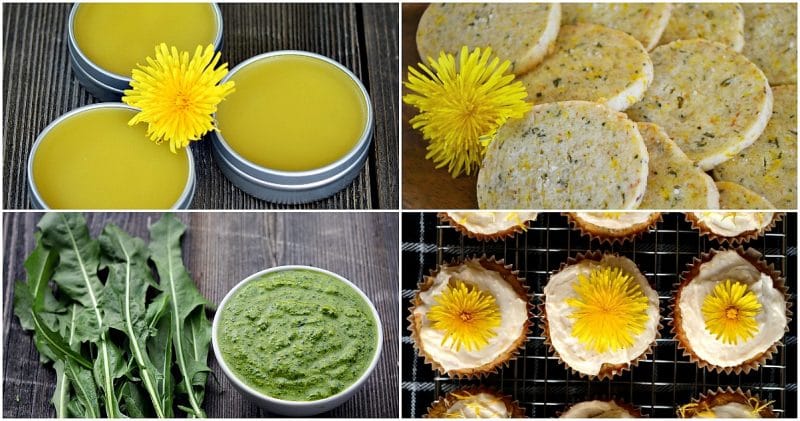
Dandelion is an entirely edible plant,3 and its leaves, roots, and flowers are incorporated into different food products. An analysis of the nutrient content of dandelion reveals high amounts of minerals, proteins, fiber, and vitamins and a balanced combination of trace elements (Table S1), making dandelion an interesting source of micronutrients.3,–6 Comparison of the nutritional composition of dandelion with that of lettuce and spinach, i.e., vegetables with similar culinary uses, shows dandelion to have a higher content of dietary fiber and proteins and a greater variety of amino acids and of most vitamins and minerals (Table S1). Dandelion consists of 1.5% lipids (total weight) and has higher proportions of unsaturated fatty acids (oleic, palmitoleic, linoleic, and linolenic acids) than either lettuce or spinach.4 Dandelion is also one of the richest green-vegetable sources of β-carotene.6 Young leaves are habitually consumed fresh as salads, either alone or in combination with other plants such as lettuce, shallot tops, or chives.3,–8 They may also be boiled and drained, sprinkled with pepper and salt, and moistened with soup or butter.7,8 Additionally, dried leaves are employed in many digestive or dietary drinks – such as the traditional dandelion wine – and soft drinks.7,8 The roasted roots are utilized as coffee substitutes, yielding a beverage devoid of the excitatory effects of coffee and tea.7,–9 Flowers are used to produce wines and desserts, and certain extracts are used as flavor components in various food products, dairy desserts, candy, baked goods, gelatins, puddings, and cheese.7,8
PHYTOCHEMISTRY OF DANDELION
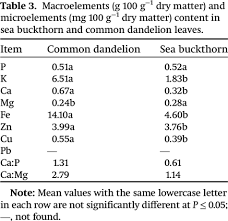
As reviewed by Schütz et al.,10 dandelion contains an array of phytochemicals distributed along the plant and endowed with potentially healthful properties (Table 1, Figure 1). Dandelion’s bitterness is due to its sesquiterpene lactones, mostly of the eudesmanolide and germacranolide types, that are unique to this plant. Major sesquiterpene lactones – generally occurring as glycosides – include taraxacolides, dihydro-lactucin, ixerin, taraxinic acids, and ainslioside.10,11 Although the most biologically relevant components of dandelion are the sesquiterpene lactones (suggested to exert anti-inflammatory and anticancer effects), the plant also contains several phenylpropanoids (shown to exert inflammation-modulating effects), terpenoids, polysaccharides (shown to play a role in immune regulation and to exert platelet anti-aggregation activity, hepatoprotective effects, and antitumoral activity), and inulin (currently under investigation for its immunostimulatory functions). Several studies show that dandelion is also a rich source of vitamins (A, C, D, E, and B), choline, inositol, lecithin, minerals, and oligoelements (calcium, sodium, magnesium, iron, silicon, copper, phosphorus, zinc, manganese).12,–14 Moreover, dandelion contains a high level of potassium (82.16 ± 2.10 mg/kg plant tissue; or 58.95 ± 1.85 mg per 236-mL cup).10,–15 Table 1 Phytochemical composition of dandelion. Main purported pharmacological properties of phytochemical components are shown in italics. Dandelion root Phytochemicals group Biological activities Phytochemicals Terpenes Sesquiterpene lactones Tetrahydroridentin B Anti-inflammatory and antimicrobial properties Taraxacolide-O-β-glucopyranoside Taraxacoside Acylated γ-butyrolactone glycoside 11β,13-dihydrolactucin Ixerin D Taraxinic acid β-glucopyranoside Ainslioside 11,13-dihydro-taraxinic acid β-glucopyranoside Triterpenes/phytosterols Taraxasterol Promote reduced cholesterol absorption Ψ-taraxasterol Arnidiol Faradiol α- amyrin β- amyrin β-sitosterol β-sitosterol-β-D-glucopyranoside Stigmasterol Phenolic compounds Phenolic acids Chicoric acid Inmunostimulatory properties Monocaffeoyltartaric acid 4-caffeoylquinic acid Chlorogenic acid Caffeic acid ρ-coumaric acid Ferulic acid ρ-hydroxybenzoic acid Protocatechuic acid Vanillic acid Syringic acid ρ-hydroxyphenylacetic acid Coumarins Umbelliferone Act on cardiovascular system Esculetin Scopoletin Storage carbohydrate Inulin Prebiotic activity Aerial dandelion parts (leaves and stems) Terpenes Sesquiterpene lactones Taraxinic acid β-D-glucopyranoside Anti-inflammatory and antimicrobial properties 11,13-dihydrotaraxinic-acid β-D-glucopyranoside Triterpenes/phytosterols Arnidiol Promote reduced cholesterol absorption β-sitosterol β- amyrin Phenolic compounds Phenolic acids Chicoric acid Inmunostimulatory properties Monocaffeoyltartaric acid Caffeic acid Chlorogenic acid ρ-hydroxyphenylacetic acid Flavonoids Luteolin 7-O-glucoside Antioxidant properties Luteolin 7-O-rutinoside Isorhamnetin 3-O-glucoside Quercetin 7-O-glucoside Apigenin 7-O-glucoside Coumarins Cichoriin Acts on cardiovascular system Aesculin Dandelion flowers Phenolic compounds Phenolic acids Caffeic acid Inmunostimulatory properties Chlorogenic acid Monocaffeoyltartaric acid Flavonoids
Luteolin 7-O-glucoside Antioxidant properties
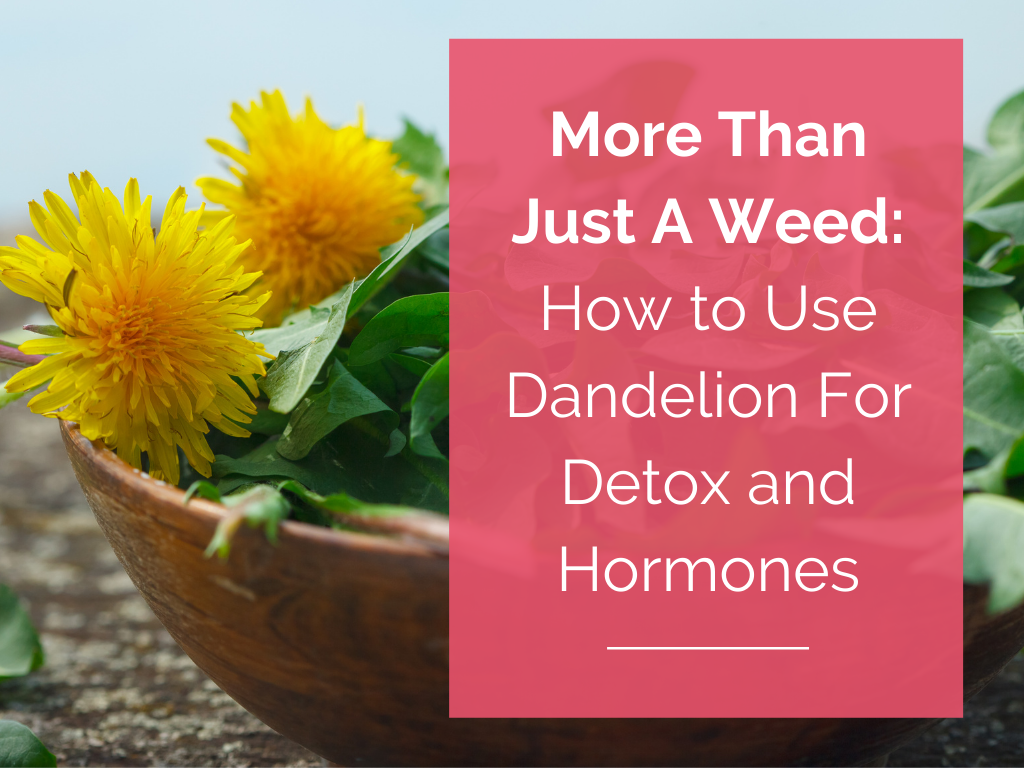
Luteolin 7-diglucoside Free luteolin Free chrysoeriol Open in new tab Figure 1 Chemical structures of the most representative phytochemicals in dandelion. Chemical structures of the most representative phytochemicals in dandelion. It is notable that the phytochemical composition of dandelion depends on the season in which it is gathered, the time of harvesting, as well as other ecological factors, and it varies greatly among the flowers, leaves, and roots of the plant. As an example, the final content of inulin in dandelion roots is determined by the conversion of inulin into laevulose (which varies from 2% in spring to 40% in autumn) and other sugars during the active period of the plant’s life.2,16 As mentioned, sesquiterpene lactones impart a bitter taste to the plant, which is especially pronounced in the leaves but is also noticeable in the roots, particularly when harvested in the spring.17 Of the free sterols present in dandelion leaves throughout the year, sitosterol is the most abundant, followed by stigmasterol and campesterol. However, levels of free methyl sterols are highest during the winter months, whereas levels of sitosterol and cycloartenol esters levels are highest during periods of sunshine.18 Dandelion root Dandelion root extracts contain sesquiterpenes such as the eudesmanolides tetrahydroridentin B and taraxacolide-O-β-glucopyranoside,19 the guaianolides 11β,13-dihydrolactucin and ixerin D,20 and three germacranolide esters, taraxinic acid β-glucopyranoside, its derivative 11,13-dihydrotaraxinic-acid β-D-glucopyranoside, and ainslioside.19,20 In addition to these five sesquiterpene lactones, dandelion contains taraxacoside, an acylated γ-butyrolactone glycoside, ρ-hydroxyphenylacetic acid, benzyl glucoside, dihydroconiferin, syringin, and dihydrosyringin.20 The root also contains several phenolic compounds. Thirteen benzenoids have been found, the predominant one being chicoric acid; others include hydroxycinnamic acid and dicaffeoyltartaric acid and their derivates, particularly caffeic acid esters and several caffeoylquinic acid isomers such as monocaffeoyltartaric acid, 4-caffeoylquinic acid, chlorogenic acid, caffeic acid, ρ-coumaric acid, ferulic acid, ρ-hydroxybenzoic acid, protocatechuic acid, vanillic acid, syringic acid, and ρ-hydroxyphenylacetic acid as well as coumarins (umbelliferone, esculetin, scopoletin, cichoriin, and aesculin) and various flavonoids such as luteolin, isorhamnetin, apigenin, and quercetin derivates (rutinosides and pentoside), among others.21,–23 Others constituents of dandelion root include various triterpenes and phytosterols such as taraxasterol and ψ-taraxasterol as well as their acetates and their 16-hydroxy derivatives arnidol and faradiol, α- and β-amyrin, β-sitosterol, and stigmasterol.10,–25 Moreover, dandelion roots contain carbohydrates (e.g., inulin), carotenoids (e.g., lutein), fatty acids (e.g., myristic acid),21,22 minerals, sugars (e.g., fructose, glucose, sucrose), vitamins, choline, mucilage (approx. 1.1%), and pectin.2,–29 Dandelion flowers and leaves The bitter taste of dandelion leaves has been ascribed to the two sesquiterpenes taraxinic acid β-D-glucopyranoside and 11,13-dihydrotaraxinic-acid-D-glucopyranoside as well as to p-hydroxyphenylacetic acid and β-sitosterol.17 The polyphenol content is higher in the aerial parts (flowers and leaves) of the plant (9.9 ± 0.28g polyphenols per 100g dandelion extract) than in the roots (0.086 ± 0.003 g polyphenols per 100g dandelion extract).22,–31 Hydroxycinnamic chicoric acid, monocaffeoyltartaric acid, and chlorogenic acid have been found throughout the plant, while the coumarins cichoriin and aesculin have been identified only in leaf extracts21,32; various flavonoid glycosides
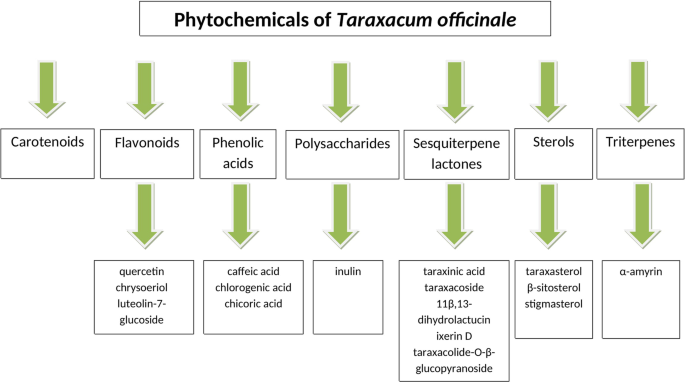
such as luteolin-7-O-glucoside, luteolin-7-O-rutinoside, isorhamnetin 3-O-glucoside, quercetin-7-O-glucoside, and apigenin-7-O-glucoside have been found only in the leaves.22,–34 The most abundant phenolic compounds in the flowers and leaves of the dandelion are hydroxycinnamic acid derivatives, particularly caffeic acid esters such as chlorogenic acid, dicaffeoyltartaric (chicoric) acid, and monocaffeoyltartaric acid.24,32 Various flavonoid glycosides such as luteolin-7-O-glucoside, luteolin-7-O-rutinoside, isorhamnetin-3-O-glucoside, quercetin-7-O-glucoside, and apigenin-7-O-glucoside have been identified in an extract of combined dandelion leaves and flowers.22,–34 Luteolin-7-O-glucoside and two luteolin-7-diglucosides, as well as free luteolin and chrysoeriol, have been isolated from dandelion flowers.22,–35 A main carotenoid pigment of the flowers is a diester of taraxanthin (lutein epoxide), for which the name “taraxien” was suggested.36 Furthermore, isomers of lutein epoxide have been isolated from dandelion flowers.37 In summary, chicoric acid and monocaffeoyltartaric acid are the major phenolic constituents of dandelion flowers, roots, and leaves.22 More than 30 other phenolic compounds have been identified in dandelion root and leaves, but most current studies focus on chicoric acid, thought to exert immunostimulatory (stimulation of phagocytosis) and antihyaluronidase activities.21,–40
PHARMACOLOGICAL PROPERTIES OF DANDELION
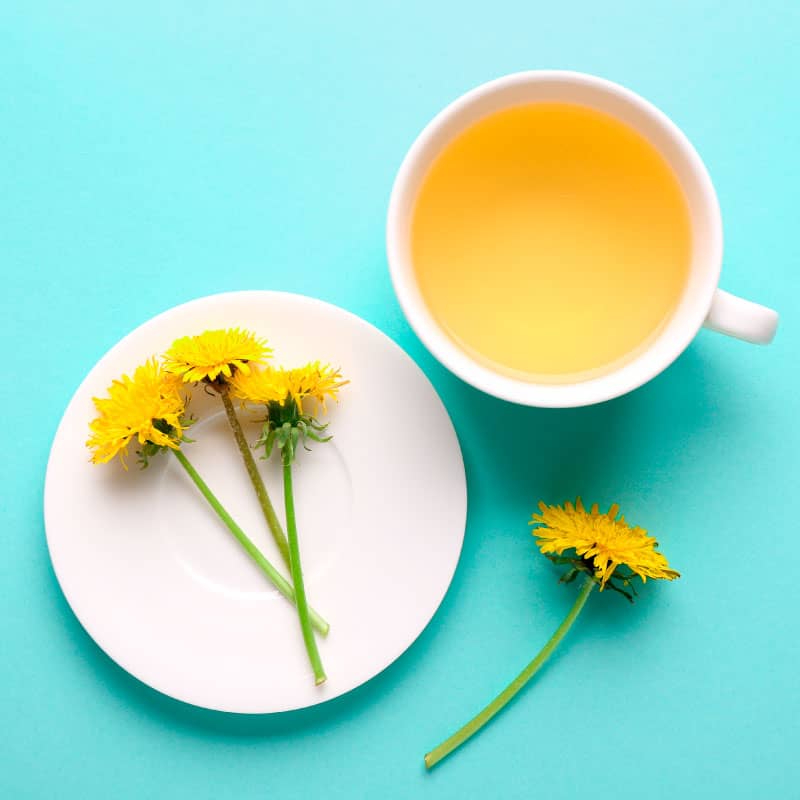
While most of the potentially bioactive components of dandelion have been isolated and identified, the pharmacological activity of many of these components remains unexplored.10 Some phytochemicals, including bitter substances, phenols, and phytosterols, possess antioxidant and anti-inflammatory activities (Table 1). A summary of the biological activities of dandelion, based on currently available in vivo and in vitro evidence, is presented in Table 2. Table 2 Summary of the in vitro and in vivo evidence for the biological activities of dandelion. Biological activity or pathological state in which activity has been documented In vitro evidence of activity In vivo evidence of activity (in animals) In vivo evidence of activity (in humans) Antioxidant30,–53 Antioxidant activity demonstrated by inhibition of NADPH (flower, leaf, stem, and root extracts), superoxide radical, hydroxyl radical (flower extract), and hydrogen peroxide. Reduces nitric oxide production and peroxyl-radical-induced oxidation in RAW264.7 cells (flower extract). Radical-scavenging activity shown in V79-4 cells Antioxidant properties in rats (hydroalcoholic extract), rabbits (root and leaf), and mice (leafy vegetables mix) Inflammation22,–67 Influences certain inflammatory mediators (TNF-α, COX-2, IL-1, iNOS) in leukocytes (root methanol extract), astrocytes (leaf extract), and RAW264.7 macrophages (dandelion polyphenols) Inhibits the production of inflammatory cytokines in rats (ethanolic, aqueous, methanolic extracts), and mice Anti-inflammatory activity in inflammatory bowel disease (herbal mix) Hyperlipidemia35,–77 Pancreatic lipase inhibitory activity Hypolipidemic effects in rats (leaf extract, water extract) and mice (water, alcohol extracts) Decreases triglycerides and total cholesterol levels in rats (flower extract) Diabetes mellitus70,–84 Insulin secretagogue activity shown in INS-1 cells Decreases serum glucose concentrations in rats (aqueous leaf extract) and mice (ethanol extract). α-glucosidase inhibitory activity in rabbits (aqueous extract) Thrombosis and ischemia85 Platelet antiaggregation activity (ethanolic extract) Cancer11,–97 Anticarcinogenic effect in HepG2 cells and CaCo-2 cells (dried aqueous extract). Decreases the growth of MCF-7/AZ cells (leaf extract), blocks invasion of LNCcP cells (root extract),
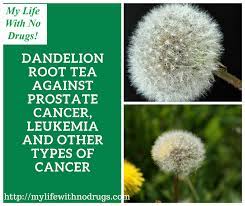
and induces apoptosis in leukemia cells (root extract) Anti-neoplastic activity in rodents. Inhibits growth of cancer cells in mice (alcoholic extract). Inhibits angiogenesis in mice (ethanolic extract) Liver disorders41,–106 Decreases lipid peroxidation in HepG2 cells (roots extract) Modulates phase I and II detoxification enzymes and hepatic antioxidative systems (leaf extract) in rats, decreases lipid peroxidation in mice (root extract), and attenuates hepatic damage in rats Gastroenterology109,–118 Enhances contraction of smooth muscle cells. Prebiotic effects. Increases growth of six beneficial intestinal bacterial strains Cholagogic effects in dogs, and choleretic effects in rats (alcoholic extracts) Improves constipation, diarrhea, and intestinal cramping in patients with chronic colitis (herbal combination). Improves symptoms of patients with gastric ulcers, gastric metaplasia, and hyperplasia Renal disorders119,–121 Diuretic effects in rats and mice (leaf extract), and beneficial effects on urolithiasis in rats Diuretic effects (ethanolic extract) Bacterial and viral infections122,124 Antiviral effects against HHV1, and antimicrobial effects (phenolic compounds) Pain56,–127 Analgesic effects in mice (dried ethanolic extract) Immunomodulation124,125 Stimulates the innate immune response in macrophages (water extract) Immunomodulatory effects in mice Abbreviations: COX-2, cyclooxygenase 2; HHV, human herpesvirus; IL-1, interleukin 1; iNOS, inducible nitric oxide synthase; TNF-α, tumor necrosis factor alpha. Open in new tab Antioxidant activities The production of reactive oxygen species in excess of that required for antioxidant defense is involved in many pathophysiological processes such as aging, atherosclerosis, cancer, and neurodegenerative disorders. Consequently, it is important to ingest antioxidants (in amounts yet to be established), either as part of the diet or through the use of nutraceuticals. Several studies have demonstrated the antioxidant activity of dandelion, both in vitro35,41 and in vivo.41,–44 In particular, an improvement of the endogenous antioxidant profile has been observed in rats administered dandelion root and leaf extracts.44,45 Another study evaluated the antioxidant activity of a leafy vegetable mix containing dandelion on C57BL/6J mice fed a high-fat and high-cholesterol diet.46 The levels of antioxidants (glutathione and β-carotene) and the activities of antioxidant enzymes (superoxide dismutase, peroxidase, reduced glutathione) increased in all animals
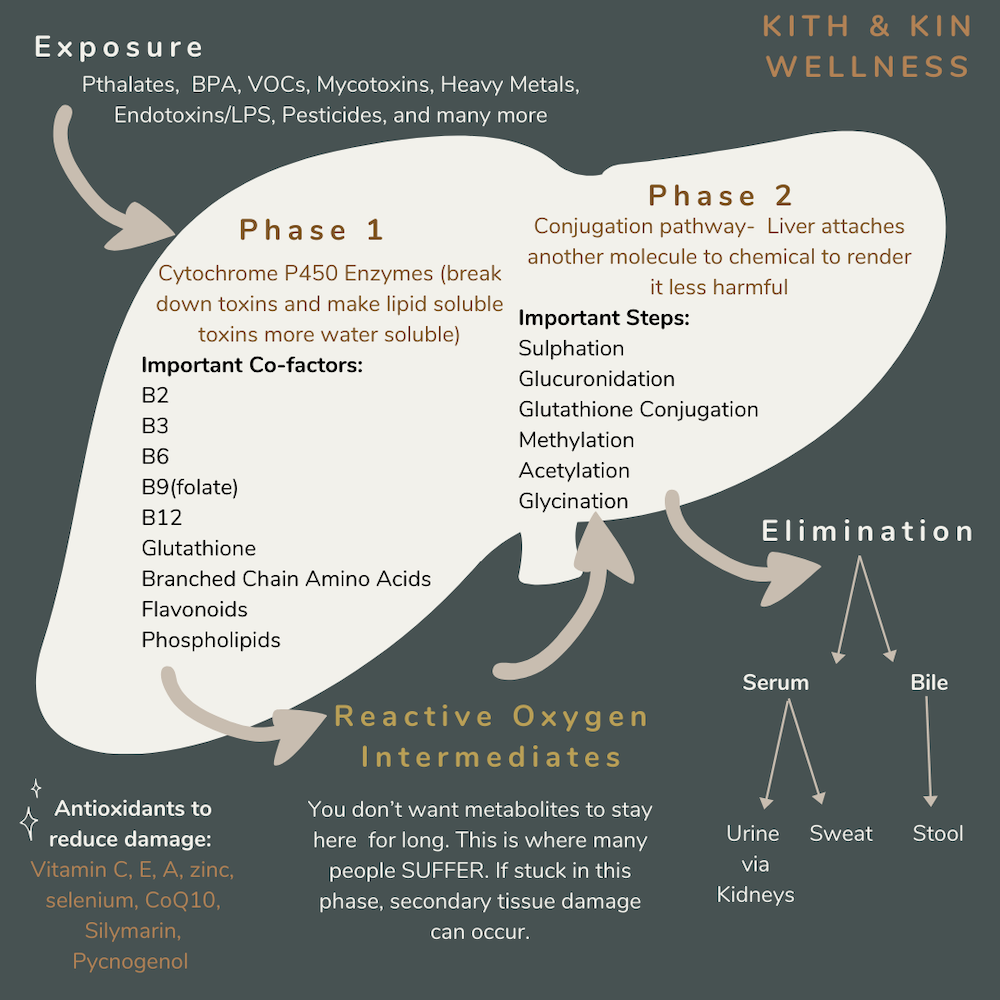
(n = 16), and lipid peroxidation was significantly lower in the plasma, liver, heart, and kidney, indicating beneficial effects of the leafy vegetable mix in terms of resistance of hepatocyte and lymphocyte DNA to oxidative damage.46 When analyzing differences between the various plant parts, the microsomal P450 system, a marker used to evaluate the antioxidant properties of natural extracts,47 has been employed to compare the activity of dandelion extracts from flowers, leaves, stems, and roots. The most efficient inhibition of hydroxyl radical production was observed with ethyl acetate and water extracts of dandelion flowers, followed by aqueous extracts of dandelion stems.48,–50 Dandelion flowers are a potentially exploitable source of natural antioxidants because of their elevated content of phenolic compounds (i.e., flavonoids and coumaric acid derivatives, with a reducing activity equivalent to 40% of that of ascorbic acid). The efficacy of the crude extracts of the flowers in inhibiting both reactive-oxygen-species-induced damage and nitric-oxide-induced damage has been attributed to caffeic and chlorogenic acids51 and to the flavones luteolin and luteolin 7-O-glucoside.35 Leaf extracts, whose polyphenolic content (9.9%) and flavonoid content (0.086%) are approximately threefold greater than that of root extracts, are effective as hydrogen donors, reducing agents, and hydrogen peroxide scavengers.30,31 These properties have been exploited for the treatment of different types of hyperbilirubinemia or enzymopathies (e.g., Crigler-Najjar syndrome and Gilbert syndrome) in newborns as well as for treatment of cholestasis caused by liver abnormalities, gallstones, or gallbladder diseases or alterations.
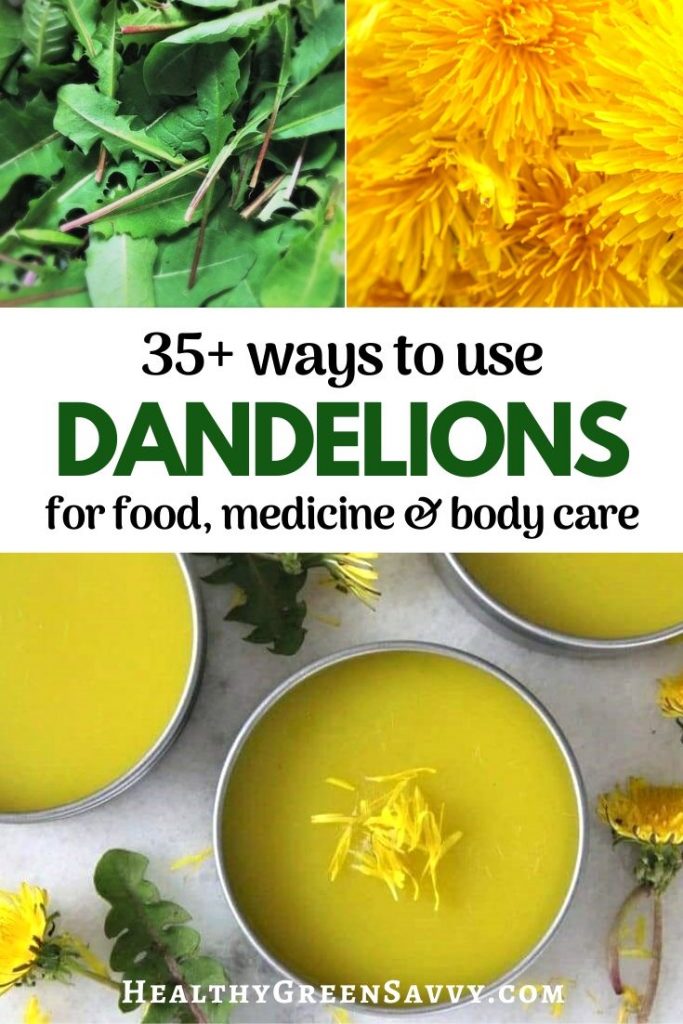
52 The health benefits of dandelion tea have been studied by evaluating the ability of dandelion’s flavonoids (present in dandelion tea) to protect V79-4 cells from free-radical-induced toxicity. By comparing the overall flavonoid content of selected herbs and teas, the radical-scavenging activity of the flavonoids in the teas, and the antiproliferative activity of the flavonoids in V79-4 cells, green tea (2.0 g fresh herb/100 mL) was found to have the lowest half maximal inhibitory concentration (IC50) values, followed by black tea, dandelion tea, hawthorn tea, rose hip tea, and chamomile tea.53 Moreover, peroxyl-radical-induced intracellular oxidation of RAW264.7 cells was inhibited by the addition of flower extracts over a range of concentrations.35 Indeed, dandelion is commonly used as an ingredient of herbal preparations to treat hepatic and gallbladder disorders. Its antioxidant and antiproliferative activities, demonstrated in vitro on hepatic cells, might provide scientific grounds for the use of dandelion in folk medicine.54 Anti-inflammatory activities The first animal study on the anti-inflammatory activity of dandelion reported a positive effect of an ethanolic extract of roots, administered per os (100 mg/kg body weight) to rats with carrageenan-induced paw edema.55 When intraperitoneal treatment (100 mg/kg) was used, partial inhibition was still observed.56 Notably, the inhibition was significantly higher with methanolic dandelion extracts: flowers (95% inhibition),57 leaves (69% inhibition), and roots (51% inhibition).58 Mechanistically, dandelion influences the expression of certain proinflammatory mediators. The acute anti-inflammatory activity of dandelion was assessed by investigating the protective effects of a methanolic root extract in terms of inhibitory activity against leukotriene B4 produced by leukocytes in response to inflammatory mediators. The observed 86% inhibition was attributed to two sesquiterpene glucosides, i.e., 14-O-β-D-glucosyl-11,13-dihydro-taraxinic acid and 14-O-β-D-glucosyl-taraxinic acid.59 Other authors have shown an anti-inflammatory activity of leaf extracts (0.1 and 1.0 µg/mL) in the central nervous system, as indicated by a significant suppression of both tumor necrosis factor alpha (TNF-α) and interleukin-1 (IL-1) production by primary cultures of rat astrocytes stimulated with substance P and lipopolysaccharide (LPS).10,60 Dandelion polyphenols also mediate the downregulation of nitric oxide, prostaglandin E2, and proinflammatory cytokine (TNF-α and IL-1) production in LPS-stimulated macrophages (RAW264.7 cells). Some researchers observed that luteolin and luteolin-7-O-glucoside (<20 µM) from dandelion flower extracts downregulate the expression of both inducible nitric oxide synthase (iNOS) and cyclooxygenase 2 (COX-2) without a concomitant reduction in enzymatic activities.61 Furthermore, recent studies report that the effects on iNOS and COX-2 expression and on the inflammatory mediators were produced in a dose-dependent manner by dandelion leaves via inactivation of mitogen-activated protein kinase (MAPK) signals.
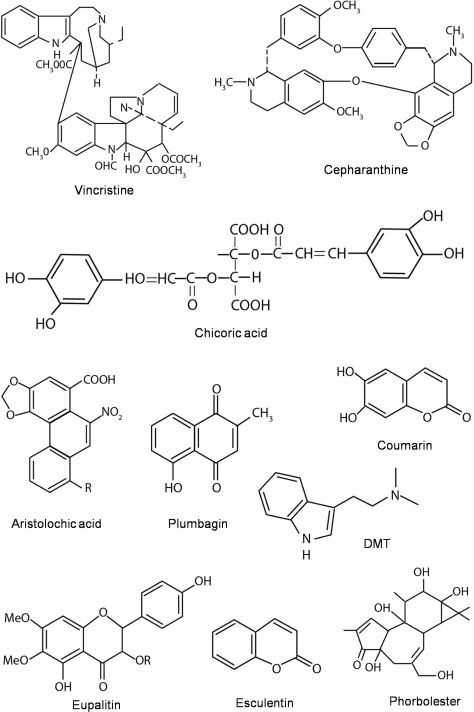
62 Recently, it has been reported that luteolin and chicoric acid, two of the foremost constituents of dandelion, synergistically inhibit inflammatory responses via inactivation of phosphatidylinositol-3-kinase (PI3K)/Akt pathways and impairment of nuclear factor kappa B (NF-κB) translocation in LPS-stimulated RAW264.7 cells.63 In vivo, the preventive administration of dandelion ameliorates the severity of induced pancreatitis and reduces IL-6 and TNF-α production during the course of the disease. The anti-inflammatory effects of aqueous extracts of dandelion leaves toward acute cholecystokinin-octapeptide-induced pancreatitis were evaluated in rats. Protective effects were shown in terms of significant decreases in pancreatic wet weight and secretion of cytokines (IL-6 and TNF-α), and increased expression of heat-shock proteins (HSP60, HSP72) in the pancreas.64 Very recent animal studies also reported protective anti-inflammatory effects of dandelion on acute lung injury induced by LPS in mice. Dandelion inhibits the production of inflammatory cytokines (TNF-α and IL-6) in bronchoalveolar lavage fluid 6 h after damage induction and decreases the number of neutrophils and the wet weight of lungs after 24 h.65 In addition, dandelion decreased LPS-induced myeloperoxidase activity and increased superoxide dismutase activity in the lungs.65 This effect was attributed to luteolin,22 which blocks mitogen-activated protein kinase (MAPK)-, extracellular signal-regulated kinase (ERK)-, and protein kinase B (Akt)-related signaling cascades and attenuates neutrophil chemotaxis and respiratory burst, thus being beneficial in acute lung injury.66 In humans, a study of a seven-herb combination that included dandelion found significantly less rectal bleeding and lower disease activity in patients with inflammatory bowel disease.67 The etiology of this disease is still unclear, but damage to the mucosal lining of the gastrointestinal tract is a hallmark feature, and current treatment is mostly aimed at systemic immunosuppression. Of note, several combined mechanisms of action of herbs might lead to decreased leukocyte infiltration and mucosal ulceration, in turn ameliorating the development of acute colonic inflammation. One herbal remedy – whose various constituents work in a synergistic fashion – inhibited activity of the proinflammatory transcription factor NF-κB; downregulated COX-2, TNF-α, IL-1, IL-6, and iNOS expression; and decreased nitric oxide, reactive oxygen species, leukotriene, and prostaglandin production, suggesting its potential use as adjunct therapy for inflammatory bowel disease.67 Pharmacological effects Hypolipidemic and anti-atherogenic effects.
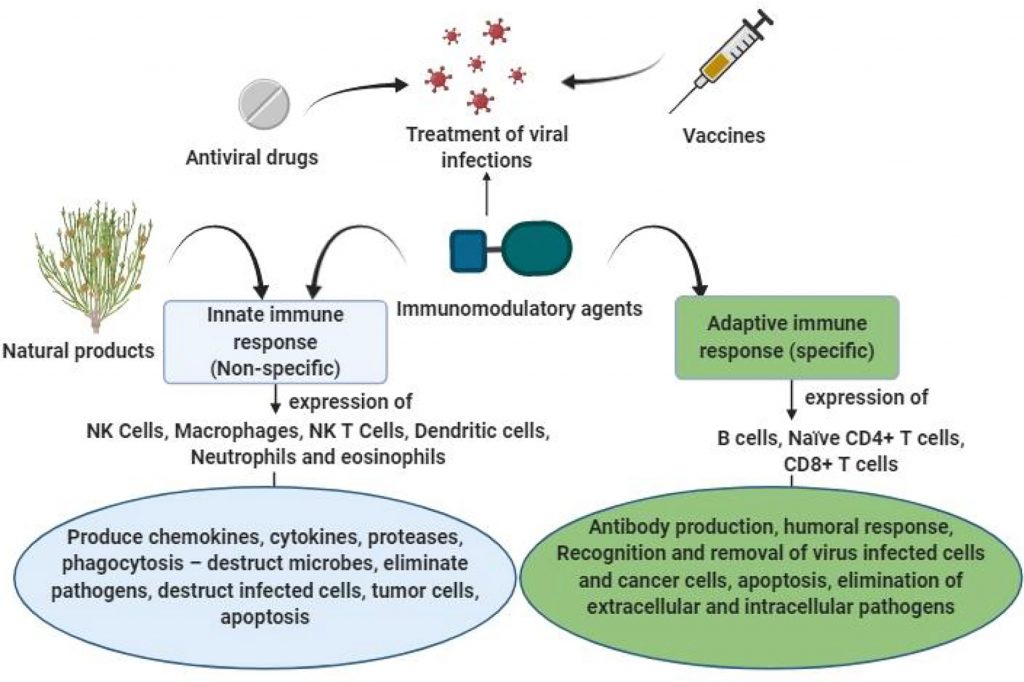
As mentioned, evidence is building to support the notion that dandelion reduces the risk of developing atherosclerosis via attenuation of oxidative and inflammatory processes.43 In addition, studies in animals reported the effects of different dandelion extracts on various risk factors of cardiovascular disease such as obesity, hyperlipidemia, hypertriglyceridemia, and hypercholesterolemia.68 As an example, hypolipidemic effects of leaf extracts were observed in rats fed a high-cholesterol diet69 and in diabetic rats under treatment with dandelion water extracts.45,70 In rats, treatment with dandelion root and leaf extracts limited the extent of atherosclerosis and reduced oxidative stress, serum levels of total cholesterol, triglycerides, and LDL cholesterol and concomitantly elevated serum levels of HDL cholesterol.45 A study designed to investigate the effects of both water extract (1.5%) and alcohol extract (3%) on oxidative stress, inflammation, and lipid profiles of C57BL/6 mice fed atherogenic diets reported a significant decrease in plasma and hepatic triglycerides and in total cholesterol concentrations after 6 weeks of treatment.43 In contrast, concentrations of total lipids, triglycerides, and total cholesterol in feces were significantly increased following supplementation with dandelion extracts. These extracts also decrease the concentration of soluble vascular adhesion molecule 1 (sVCAM-1), a parameter of vascular assessment.43 Inhibition of pancreatic lipase, a key enzyme for fat digestion,71 may have potential as an effective means to alter fat absorption.72 Indeed, orlistat, a pancreatic lipase inhibitor, is an anti-obesity medication73,74 associated with several untoward side effects.75,76 The potent inhibitory activity of dandelion on pancreatic lipase has been evaluated in vitro and in vivo to determine the potential usefulness of this plant as an anti-obesity agent with limited side effects. In vitro, the inhibitory activity of dandelion – at a concentration of 250 µg/mL – against pancreatic lipase is 90.2% of that of orlistat,77 with dandelion having a dose-dependent effect that resulted in an IC50 of 78.2 µg/mL versus an IC50 of 0.14 µg/mL observed with orlistat.77 To determine pancreatic lipase inhibitory activity in vivo, 16 mice were orally administered a 95% ethanol extract of dandelion (400 mg/kg) following an overnight fast. This extract significantly suppressed the postprandial increase of plasma triglycerides at 90 min and 180 min and reduced the overall plasma triglyceride levels. As mentioned, dandelion leaves contain flavonoids, such as luteolin22 and others, that might exert pancreatic lipase inhibitory activity.78,–80
Hypoglycemic effects.

Dandelion has been studied in experiments designed to clarify the mechanism of action of its hypoglycemic properties. Controversial results suggest mechanisms that involve insulin resistance and contribute to β-cell burnout in patients with diabetes. It appears that certain dandelion extracts stimulate the release of insulin by pancreatic β-cells, which in turn decreases blood sugar levels. In diabetes mellitus, hyperglycemia is responsible for the development of oxidative stress (via glucose auto-oxidation and protein glycation), which is characterized by increased lipid peroxide production and/or decreased antioxidative defense.81 Insulin secretagogue activities of dandelion extracts – at 40 µg/mL – were found in INS-1 cells, again suggesting the potential of these extracts as antidiabetic agents.82 In vivo (in rats with streptozotocin-induced diabetes), a decrease in hepatic malondialdehyde (MDA) concentrations and a significant decrease in serum glucose concentrations were observed after administration of an aqueous extract of dandelion leaves.70 The antihyperglycemic effect of an antidiabetes herbal preparation containing 9.7% dandelion root was demonstrated by significant changes in the antioxidant defense in an experimental model of short-term diabetes mellitus.83 Administered to alloxan-induced nonobese diabetic (NOD) mice at a dosage of 20 mg/kg, a dried ethanol extract significantly decreased glucose and fructosamine levels.83 Another study in diabetic NOD mice assessed the effects of plant extracts on hepatic concentrations of glutathione S-transferases (GSTs) and MDA, thought to be possible indicators of oxidative stress in early diabetes. After a 7-day treatment with 20 mg/kg of plant extract, a significant increase in the catalytic concentration of GSTs and a nonsignificant decrease in MDA concentrations were observed; based on these results, an antidiabetic effect of dandelion was proposed.81 Finally, recent studies in diabetic rats noted the beneficial properties of dandelion, shown to exhibit insulin secretagogue activity and to decrease glucose concentrations in serum.10 Alpha-glucosidase is a membrane-bound enzyme located in the epithelium of the small intestine that catalyzes the cleavage of glucose from disaccharides. Compounds able to inhibit intestinal α-glucosidase can, in theory, slow digestion and absorption of carbohydrates, in turn controlling postprandial hyperglycemia independently of insulin. Dandelion, in the form of aqueous extracts, can inhibit α-glucosidase in vitro, with IC50s of 2.3 mg plant extract/mL, 3.5 mg plant extract/mL, and 1.83 mg plant extract/mL when tested on α-glucosidase from baker’s yeast, rabbit liver, and rabbit small intestine, respectively.84 Anticoagulant/antithrombotic effects. Ethanolic extracts of dandelion roots exert inhibitory effects on human platelet aggregation, at least in vitro.85 Such extracts are able to dose-dependently inhibit ADP (adenosine 5′-diphosphate)-induced platelet aggregation, with a maximal inhibition of 85% at a concentration corresponding to 40 mg of dried root per milliliter of human platelet-rich plasma. Low-molecular-weight polysaccharides caused a 91% inhibition, while a fraction enriched in triterpenes and steroids showed an 80% inhibition of platelet aggregation, also at a concentration equivalent to 40 mg crude material per milliliter of platelet-rich plasma.85
Chemotherapeutic potential.
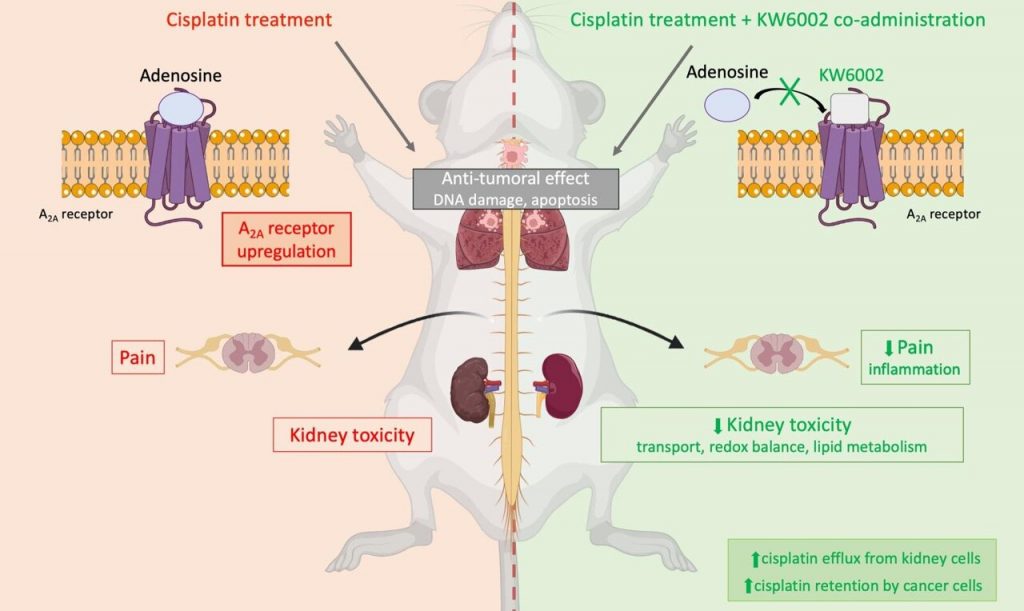
Although aqueous extracts of dandelion have been used in traditional medicine throughout Asia, Europe, and North America11 for the treatment of various types of cancer, including leukemia and breast cancer, the mechanism by which such extracts might act is unknown. Anticarcinogenic effects of dandelion on cell proliferation and metastasis formation have been investigated in vitro. The results show that these extracts induce apoptosis in human hepatoma cells (HepG2) and exhibit cytotoxic activities in cell lines of human intestinal carcinoma (Caco-2).86 Dandelion, at concentrations of 0.2 mg/mL, increased the production of cytokines by HepG2 cells.86 In particular, an aqueous extract of dandelion caused a 26% time-dependent and partially dose-dependent reduction of cell viability. Furthermore, in cells treated for 48 h, a maximal secretion of TNF-α (186 ± 2.0 pg/mL) and of IL-1 (66 ± 1.7 pg/mL) was observed. The increased TNF-α and IL-1 levels likely contributed to the observed dandelion-extract-induced apoptosis, which was almost completely blocked by the addition of anti-TNF-α and IL-1 antibodies.86 An alcoholic extract of dandelion, administered to mice for 10 days, markedly inhibited the growth of inoculated Ehrlich ascites cancer cells within a week of treatment.87 A nondialyzable hot water extract of roots (Tof-CFr) with antitumor activity was isolated from dandelions. Tof-CFr showed antitumor effects in Ehrlich ascites carcinoma from ddY mice and in syngeneic tumor lines derived from C3H/He-MM46 mice. It has been suggested that Tof-CFr, a glucose polymer, is similar to antitumor polysaccharides such as lentinan in terms of mechanism of antitumor action and increased resistance against viral infections.87 Recent results indicate that crude extracts of dandelion leaves decrease the growth of MCF-7/AZ breast cancer cells by 40%, after 96 h of incubation, in an ERK-dependent manner.88 Furthermore, an extract of dandelion roots was found to block invasion of MCF-7/AZ breast cancer cells, while an extract of dandelion leaves blocked the invasion of LNCaP prostate cancer cells. Inhibition of invasion was further evidenced by decreased phosphorylation levels of focal adhesion kinase and sulforhodamine B as well as by reduced activities of matrix metalloproteinases (MMP).88 Clearly, the effect on cell proliferation could be ascribed to the inhibition of ERK activity, with ERK being a major determinant in the MAPK pathway involved in cell survival, differentiation, and cell growth.89 Future fractionation and isolation of the active ingredients of the individual extracts will be important for elucidating the antiproliferative effects of dandelion leaf extracts. Inhibition of tumor cell proliferation by Taraxacum extracts, reported earlier, was attributed to triterpenoids and sesquiterpenes.90,91 Of the triterpenoids, taraxasterol and taraxerol exhibited significant inhibitory effects92; indeed, results strongly suggested a potential role for taraxasterol as a chemopreventive agent. In other studies, an active compound identical to lupeol – a lupane-type triterpene that inhibits cell growth and induces melanogenesis of a mouse melanoma cell line (B16 2F2) – has been isolated.93,94 The major limitation of most available cancer chemotherapies is the severe toxicity-induced side effects, with loss of efficacy due to chemoresistance being another drawback.95,96 A recent study indicates that components of aqueous extracts of dandelion root act either alone or synergistically to induce cancer cell death by inducing signaling complex and by selectively inducing subsequent extrinsic apoptosis in human leukemia cells.97,98 Low concentrations of dandelion root extracts are capable of inducing apoptosis specifically in cancer cells, e.g., a human acute T-cell leukemia (Jurkat) cell line, with no toxicity to noncancerous cells. The possible mechanism by which dandelion root extracts work is through very early activation of caspase-8 and subsequent activation of caspase-3. Moreover, it was observed that Jurkat cells expressing a dominant-negative Fas-associated death domain (FADD) protein were insensitive to apoptosis induced by dandelion root extracts, indicating involvement of the extrinsic pathway cell death.99 Moreover, the dominant-negative FADD proteins that are unable to form a complete death-inducing signaling complex (DISC) are resistant to dandelion root extract treatment, which further confirms that this pathway induces receptor-mediated apoptosis.97 Concerning chemoprevention, it should be remembered that angiogenesis consists of basement membrane degradation of existing blood vessels, the migration, proliferation, and rearrangement of endothelial cells, and the formation of new blood vessels.100 Therefore, downregulation of angiogenesis could be advantageous for the prevention of neoplastic growth and inflammation.101 Ethanol extracts of dandelion flowers and leaves possess antiangiogenic activity.17,–102 Such activity could be due to the presence of certain flavonoid components, such as luteolin,22 thereby providing a pharmacological basis for the use of dandelion in the treatment of inflammatory diseases and cancer in folk medicine. 102
Detoxifying and hepatoprotective effects.

Because of its purported ability to “detoxify” the blood, dandelion is used in folk medicine to maintain liver health and to treat various dermatologic and systemic disorders. The hepatoprotective properties of dandelion were recently reviewed.103 Dandelion has been shown to modulate phase I and phase II enzymes in rat liver microsomes104; for example, after rats were given 4 weeks of free access to a 2% dandelion solution, the activity of two cytochrome P450 (CYP) isoforms, CYP1A2 and CYP2E, in the liver microsomes was significantly decreased to 15% of control values.104 Several in vivo studies exist, one of which was conducted to investigate the effects of dandelion leaf extracts on the hepatic antioxidant system of rats fed a high-cholesterol diet.42 The control group received a diet without the extracts, while three other groups received dandelion leaf extracts, i.e., water, ethyl acetate, and ether extracts. There was no significant difference between the four groups in cytochrome P-450 content. The activity of hepatic xanthine oxidase was significantly lower in the water extract group than in the other three groups. Superoxide dismutase activity was significantly lower in the three dandelion leaf extract groups, but catalase activity was significantly higher in the three dandelion leaf extract groups than in the control group. The activity of both glutathione peroxidase and GSTs was significantly increased in the water extract group as compared with the control group. Lipid peroxide content was lower in the water extract group than in the control group.42 Aqueous extracts of dandelion roots increase the antioxidant capacity and decrease lipid peroxidation, thereby protecting against alcoholic liver damage in HepG2/2E1 cells and in imprinting control region mice.41 Likewise, mice that received (1.0 g/kg body weight/day) a water extract with ethanol had no signs of alcohol-induced hepatotoxicity, as evidenced by significant reductions in serum aspartate aminotransferase, alanine aminotransferase, alkaline phosphatase, and lactate dehydrogenase activities compared with findings in mice administered ethanol alone.41 To isolate the molecules (or classes of molecules) responsible for the effects observed, the hepatoprotective potential of ethanolic extracts and sesquiterpene-lactones-enriched fractions of dandelion roots was also evaluated against carbon tetrachloride (CCl4)-induced hepatotoxicity in mice.41 Postchallenge treatment with such compounds significantly protected mice from hepatotoxicity, namely in terms of lower levels of serum enzymes regarded as markers of liver injury (alanine aminotransferase [ALT], aminotransferase [AST], alkaline phosphatase [ALP], and total bilirubin). Furthermore, the authors reported significant reductions in liver weight and liver protein in drug-treated hepatotoxic mice as well as reduced oxidative stress, as demonstrated by increased reduced glutathione content and decreased lipid peroxidation. Histopathological evaluations of the liver also revealed that ethanolic extracts and sesquiterpene lactones reduced the incidence of liver lesions induced by CCl4. Hence, the sesquiterpene lactones in dandelion exert protective effects against acute hepatotoxicity induced by the administration of CCl4 to mice. Furthermore, the activity of sesquiterpene lactones may be due to the synergistic action of two specific sesquiterpene lactones identified from enriched ethyl acetate fractions.105 A very recent animal study has revealed the hepatoprotective effect of two polysaccharides isolated from dandelion, as shown by the modulation of inflammatory responses and the amelioration of oxidative stress.106 These polysaccharides (administered at 304.92 mg/kg body weight, for 7 days) attenuated CCl4-induced hepatic damage in Sprague-Dawley rats through the regulation of NF-κB and its mediators such as iNOS, COX-2, TNF-α, and IL-1. Furthermore, histopathological observations reveal low levels of inflammatory cell infiltration, centrilobular fatty change, apoptosis, and necrosis in treated animals. In addition, pretreatment with dandelion polysaccharides markedly decreased AST and ALT activities as well as hepatic lesions. Polysaccharides also increased free-radical scavenging activity, reversed other hepatitis-associated symptoms, including glutathione depletion, and increased antioxidant enzyme activities.106 Fibrosis, characterized by extracellular matrix accumulation and disruption of normal tissue architecture, is a common cause of chronic failure of many organs, including kidneys, and is a leading cause of morbidity and mortality worldwide.107 The traditional use of dandelion as an antifibrotic agent in hepatic disorders is supported by recent evidence of the therapeutic effect of water-ethanol extract of dandelion root on CCl4-induced liver fibrosis in rats.108 Treatment with a water-ethanol extract of dandelion root provokes inactivation of hepatic stellate cells and enhancement of hepatic regenerative capabilities. As a consequence, hepatic fibrinous deposits and oxidative stress were decreased in intoxicated mice, and the histological architecture and the modulation of the expression of glial fibrillary acidic protein and alpha smooth muscle actin were restored. Concomitantly, expression of metallothionein I/II increased in groups treated with water-ethanol extract of dandelion root.108 Gastrointestinal effects. Bile is secreted by the liver into the gall bladder to emulsify fats and therefore is essential for the digestion of fatty acids and the absorption of fat-soluble nutrients. Early studies of dandelion as a cholagogue date from 1931, when researchers reported that dandelion causes contractions of the gallbladder by promoting bile flow in dogs.109 An increase in bile production was also observed in other animal studies110,–112 that support the traditional use of dandelion as a digestive and appetite stimulant.113 Treatment with different dandelion-containing herbal combinations seemed to improve constipation, diarrhea, and intestinal cramping in 96% of patients in a cohort of 24 adults diagnosed with chronic colitis.114,115 Other studies also reported improvements in animals with gastric ulcers, gastric metaplasia, and hyperplasia.116 A screening study of the kinetogenic effects of serum containing dandelion was performed on rat colonic smooth muscle cells.117 Dandelion increased the contractions of cells such as rat colonic smooth muscle cells, as assessed by a decrease in cell length. The health benefits of dandelion root have also been explored in relation to their proportion of inulin, which acts as a demulcent and prebiotic that strongly enhances immune function.10 An infusion of dandelion root stimulated the growth of 14 strains of bifidobacteria in vitro.118 The uptake of oligofructans, glucose, fructose, and total saccharides was determined using enzymatic and phenol-sulfuric methods. Based on the results, dandelion oligofructans appear to be an important source of carbon and energy for the bífidobacteria tested.118 In particular, accelerated growth of six beneficial intestinal bacterial strains occurred after the addition of oligofructans, including Bifido adolesentis, Bifido bifidum, Bifido catenulatum, and Bifido longum.118 Renal effects. Dandelion has been employed extensively as a diuretic in traditional folk medicine and in modern phytotherapy in Europe, Asia, and the Americas. As an example, its trivial names in French and Italian are, respectively, “pissenlit” and “piscialetto,” both hinting to its ability to provoke enuresis. Indeed, dandelion leaves have been shown to possess a diuretic effect in rats, although only at high doses in one study and only to a modest degree in another. In rats and mice, dandelion leaf extracts had diuretic effects as potent as those of furosemide.119 Dandelion exhibits greater diuretic effects than other herbs such as equisetum and juniper berry.2,29 In particular, the diuretic effect accounted for 100% of the weight loss found in these animal studies. A potential application of dandelion to prevent and treat kidney stone formation has been studied using female Wistar rats. Dandelion, in synergy with six other plants in an infusion, exhibited a beneficial effect on urolithiasis, which was attributed to a disinfectant action and, speculatively, to the presence of saponins. Nevertheless, more effective and equally innocuous substances are available for all of the beneficial effects mentioned.120 It must be underscored that another study failed to find any diuretic action of dandelion extract.56 One pilot study has been published in which a high-quality fresh leaf hydroethanolic extract of dandelion was given to human volunteers to assess urine volume and urination frequency. On the basis of these first human data, ethanolic extracts of dandelion might exert diuretic activity in humans. The limited sample size of this study (n = 17), however, calls for confirmation of these results. Further studies are needed to establish the value of this herb for induction of diuresis in human subjects.121
Antimicrobial/antiviral effects.
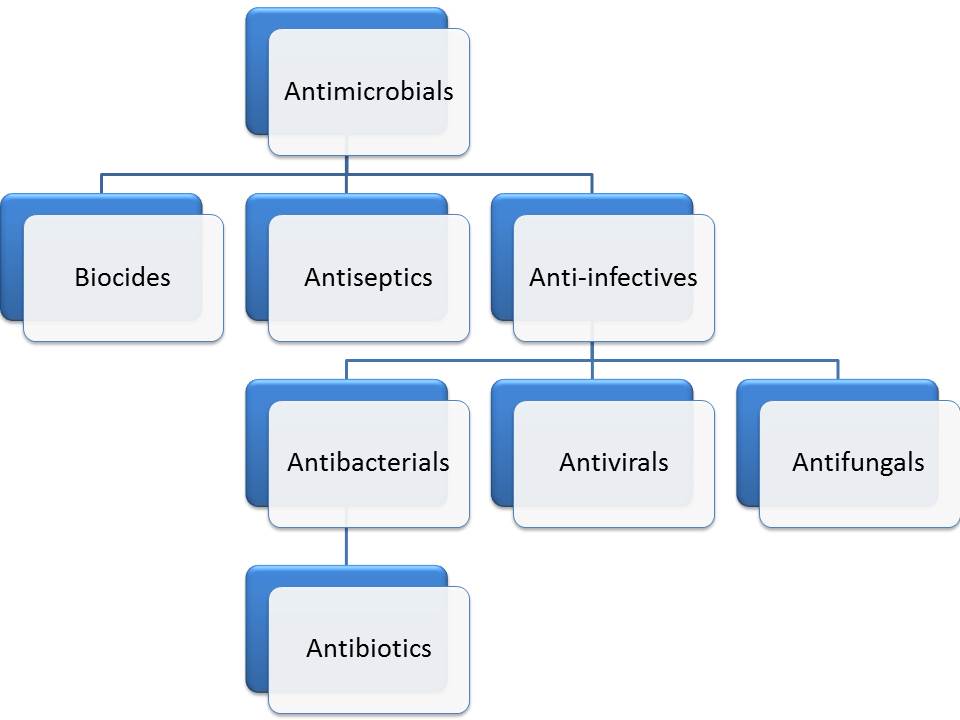
Like many herbal extracts, dandelion has antiviral properties. In fact, published data demonstrate in vitro antiviral effects against the human herpesvirus type 1.122 Crude extracts of dandelion have also been screened for their in vitro antioxidant and antimicrobial properties. The results show that dandelion has antimicrobial activity,123 which has been attributed to its flavones. This antimicrobial activity might be mediated by the antioxidant activity of the flavones, but this hypothesis requires confirmation. Immunomodulation. The polysaccharides of dandelion are often proposed to have immunomodulatory activities. As an example, the effects of dandelion on the restoration of suppressed immune functions (cell-mediated, humoral, and nonspecific immunity) have been tested in short-chain aldehyde reductase (scald) mice, and a dose-dependent effect was reported.124 Some observations report inhibition of TNF, whereas others claim stimulation.60,86 For example, the effects of hot-water (100°C) and cold-water (4°C) extracts of dandelion roots on the innate and adaptive immune responses in mice were assessed. Neither hot- nor cold-water extracts affected the viability of macrophages at concentrations below 18 mg/mL and 8mg/mL, respectively.125 Thioglycollate-challenged macrophages supplemented with either hot- or cold-water extracts produced significantly higher amounts of various cytokines, such as IL-6 and IL-12, than non supplemented controls.125 These data are suggestive of a modulation of the innate immune response by dandelion. In vivo, animals immunized with Ova/FIA (Freund’s incomplete adjuvant) and treated with hot-water extracts produced more inmunoglobulins (G1, G2a, G2b) than did controls.125 Splenocytes of mice treated with OVA+FIA and hot-water extracts also produced elevated levels of both OVA-specific Th1-type (IFN-γ) cells and cytokines (IL-4, IL-6, IL-10). These results suggested that hot-water extracts can modulate the immune response to allergens in mice.125 However, more research is needed to clearly establish the role of dandelion in the immune system. Other effects. In a hot plate test of analgesia, 100 mg/kg body weight of a dry ethanolic dandelion extract – administered intraperitoneally to mice – enhanced reaction time by about 38% after 3 hours.126 The same dose reduced the writhing response to phenylquinone in mice by approximately 24%, while oral treatment with 1g/kg body weight resulted in a reduction of about 44%.56,127 An animal study showed that dandelion extract upregulated the expression of estrogen receptors (ER-α, ER-β), progesterone receptor, and follicle-stimulating hormone receptor in the adipose tissue and reproductive organs of mice following oral treatment with the extract for 6 weeks, suggesting its potential application to treat reproductive hormone-related disturbances.128 Finally, dandelion contains the sesquiterpene desacetylmatricarin, which has antiallergic properties, as demonstrated via the attenuation of hexoaminidase that occurs with histamine release when mast cells are activated.10
DOSAGE AND TOXICOLOGY
A survey of the literature shows that the most widely used daily dose of crude dried dandelion roots or leaves is in the range of 4–10g, while that of fresh roots or leaves, habitually consumed as plant foods, is approximately 50g/day or more, varying with different culinary habits.11 The British Herbal Pharmacopoeia recommends 0.5–2g of root or 4–8mL of root tincture, three times per day.129 The German Commission E Monographs recommend doses of 3–4g of root, two times per day, or 10–15 drops of tincture, three times per day.130 The British Herbal Pharmacopoeia recommends 3–5 g of leaves or 5–10mL of leaf tincture, two times per day.129 The Commission E recommends 4–10 g of leaves or 2–5mL of leaf tincture, three times per day.111 CONCLUSION Dietary phytochemicals constitute a relevant research area of nutrition and health.131,–134 The future of this area depends on the identification of active molecules within foods and plants and on an increased understanding of how the use of such molecules might play a role in disease prevention and therapy. As reviewed here, emerging evidence suggests that dandelion and its constituents have antioxidant and anti-inflammatory activities that translate into diverse biological effects. Even though plant foods and their phytochemicals should not be regarded as medicines (especially for the treatment of serious pathological conditions), dandelion and its formulations might have potential to prevent or ameliorate the outcome of several degenerative diseases such as atherosclerosis and coronary artery disease, obesity, diabetes mellitus, and cancer. The mechanisms of action through which dandelion’s phytochemicals exert their activities are manifold; many have been identified and involve multiple cell-signaling pathways and molecules such as NFκB, Akt, MEK, ERK, sVCAM-1, MAPK, MMP, TNF, IL, and others. It is also noteworthy that dandelion is habitually consumed (whole or as component of other preparations) in several countries and – as far as is known – is safe for human consumption. Further exploitation of dandelion for phytopharmacologic uses requires additional experiments, especially if preparations of isolated and purified constituents are to be employed. One notable area to be investigated would be the nutrigenomic effects of dandelion and its ability to inhibit or increase the expression of genes related to degenerative diseases. In conclusion, the long history of dandelion as a folk remedy is now supported by an increasing amount of scientific data and is gaining evidence-based credibility. Based on the current evidence (summarized in Table 2), future controlled human experiments are warranted and will eventually build the foundation for the introduction of novel dandelion preparations into the market. Funding. This work has been supported by the Spanish Ministry of Science and Innovation (R&C2007-01920) and the Regional Government of Madrid (CPI/0631/2008). Declaration of interest. The authors declare no conflict of